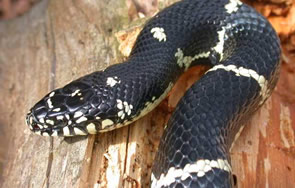
Lampropeltis getula
Photo by JD Willson
Description: The eastern kingsnake is fairly stout with a black back marked with a chain-like pattern of thin white or yellow bars. The belly has yellow or white patches on a black background. Kingsnakes found on the Outer Banks are usually brown rather than black and have light speckles between the chain-like pattern. In the western-most mountains of North Carolina, the kingsnake’s chain-like markings are usually broken up into tiny spots.
Feeding/Diet: Eastern kingsnakes are strong constrictors that prey on a variety of other animals, including rodents, eggs, frogs, lizards, small turtles, salamanders, and snakes—even venomous species such as rattlesnakes and copperheads.
Activity/Behavior: Eastern kingnsakes are active during the daytime and are often found around farms and even in suburban areas, taking refuge under objects such as old boards or tin.
Habitat/Range: Eastern kingsnakes live in a variety of habitats but are often found near water.
Reproduction: Kingsnakes lay 10–24 eggs in early summer and the babies, hatching in August or September, resemble the adults.
Miscellaneous: Kingsnakes are immune to the venom of pitvipers such as copperheads, cottonmouths, and rattlesnakes. The kingsnake is usually rather docile, but may bite and release a foul musk when first captured.
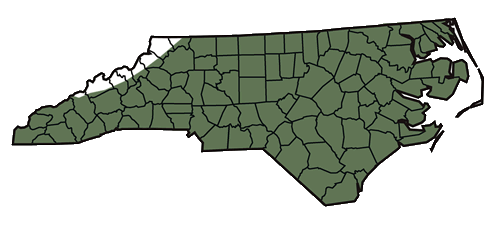
The shaded region represents the range of the eastern kingsnake in North Carolina.
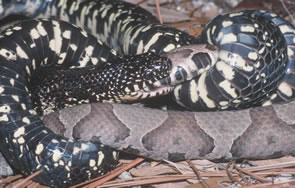
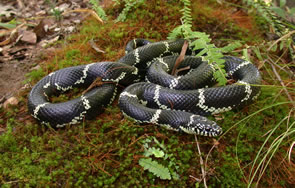
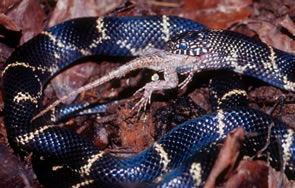
Photo by RW VanDevender
Photo by JD Willson
Photo by John White
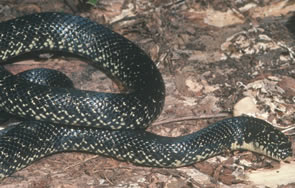
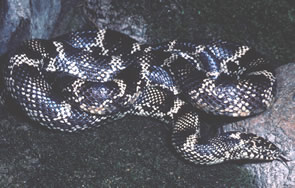

Photo by RW Van Devender
Photo by RW Van Devender
This website created by: J. Willson, Y. Kornilev, W. Anderson, G. Connette and E. Eskew.
For comments or questions contact M. Dorcas: midorcas@davidson.edu.
M. Dorcas homepage: http://bio.davidson.edu/dorcas
Davidson College, Davidson, North Carolina 28035-1719.
Text and maps from: Dorcas, M. E. 2004. A Guide to the Snakes of North Carolina. Davidson College - Herpetology Laboratory, Davidson, NC. – Copyright by Michael E. Dorcas.
Partial Funding for this website provided by a Associate Colleges of the South, National Science Foundation, and Duke Energy.
